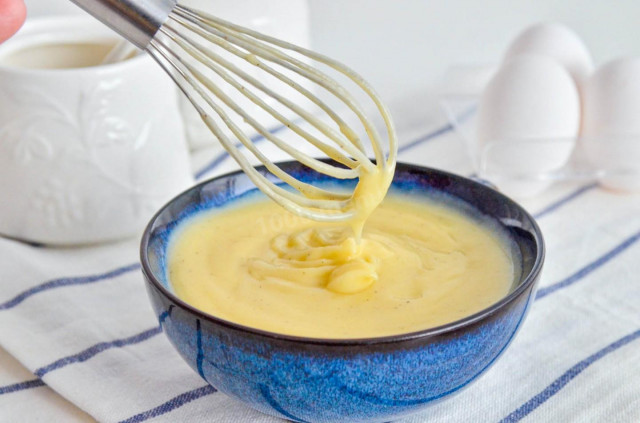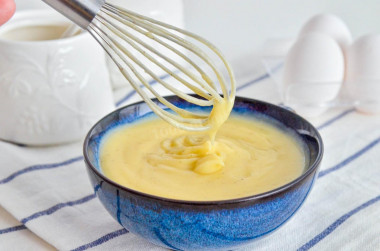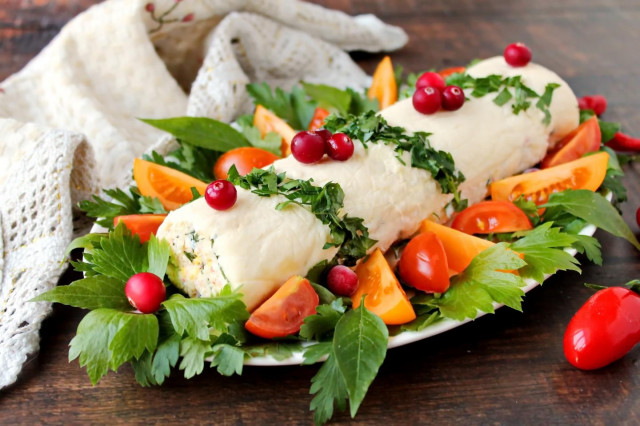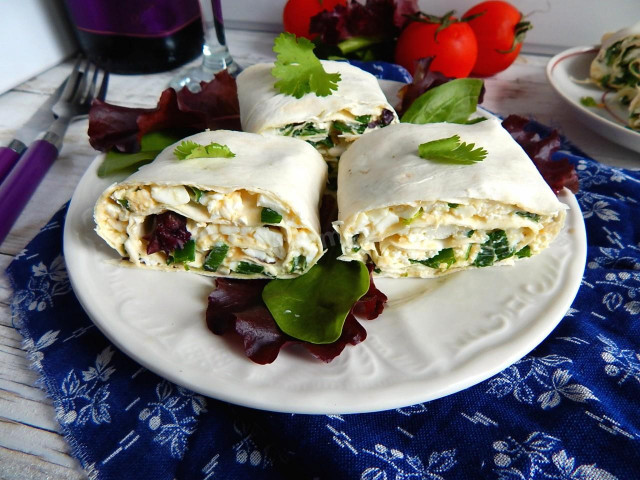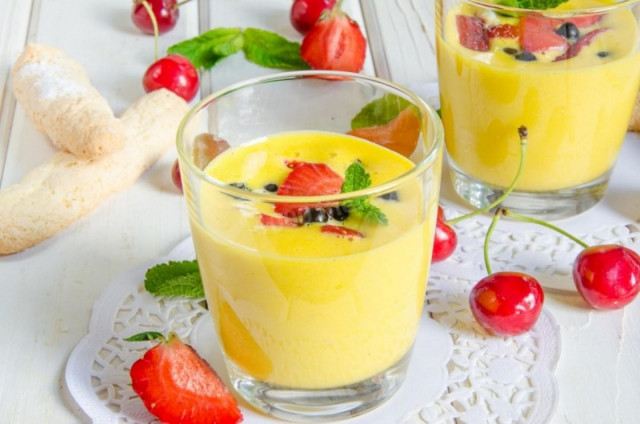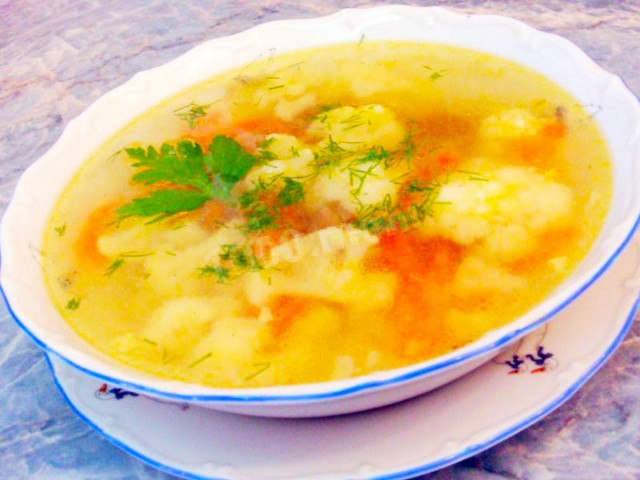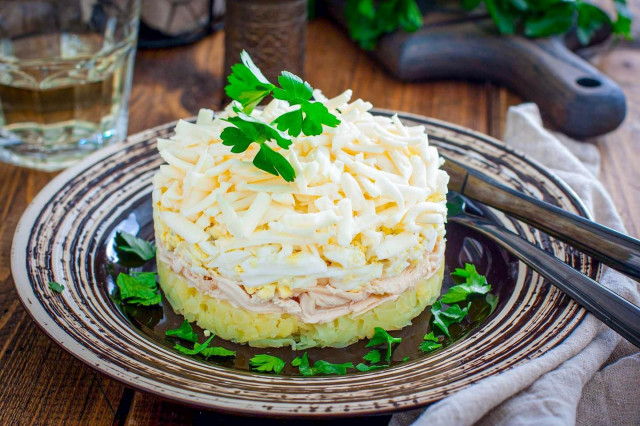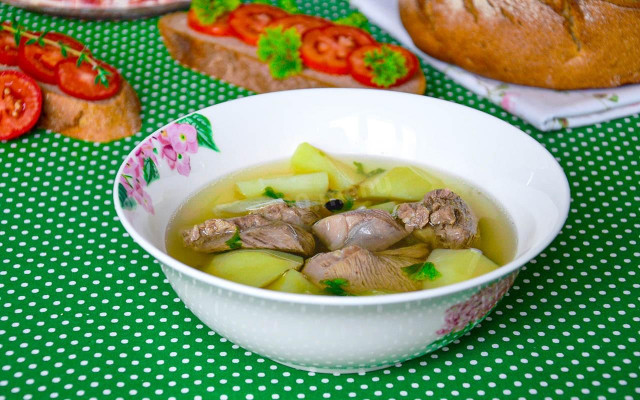Composition / ingredients
Step-by-step cooking
Step 1:
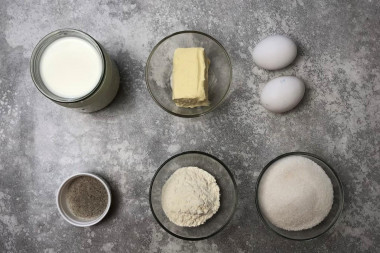
How to make custard with milk and eggs? Prepare the products. You can take any fat content of milk, it does not matter. I took the eggs of the selected category. The amount of sugar varies according to taste — from 150 to 200 grams. I took the average value — 170 grams. I have vanilla sugar with natural vanilla, that's why it's so black, and black inclusions are visible in the cream. It is better if the butter is soft, so take it out of the refrigerator in advance.
Step 2:
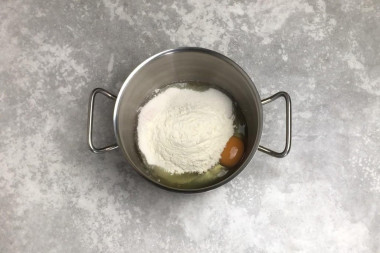
Take a pot with a thick bottom. This is an important question, because a lot depends on the choice of dishes in this recipe. In a saucepan with a thick bottom, you can safely cook the cream on the stove, and you will have to put the usual one in a water bath so that the mass does not burn or turn into an omelet. Break eggs into a saucepan, pour plain sugar and vanilla, add flour. Stir all the ingredients with a whisk until smooth.
Step 3:
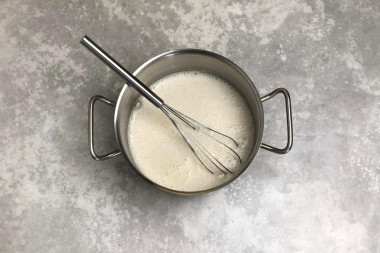
Pour the milk in a thin stream with constant stirring with a whisk. It will connect with the rest of the products pretty quickly. It is by pouring the liquid into a thicker mass that you will avoid the formation of lumps.
Step 4:
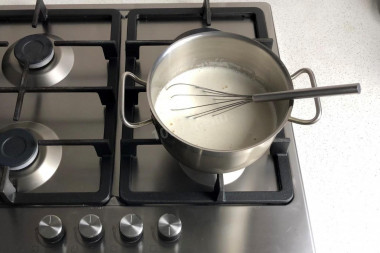
Put the pan with the milk mixture on a small fire. Cook the cream without leaving the stove and stirring the mass with a whisk all the time. This is important, because otherwise the bottom layer will heat up faster and stronger, and the eggs will curdle, you will get an omelet, not custard. With constant stirring, all layers of the cream are heated equally.
Step 5:
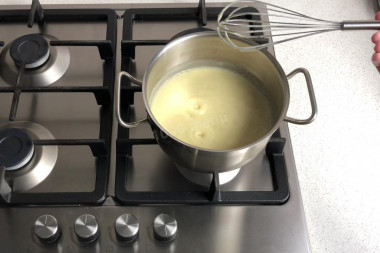
Pretty quickly, the mass will start to thicken, getting stronger and stronger by the minute. It is necessary to wait for its boiling, large bubbles will appear on the surface, it will begin to "puff".
Step 6:
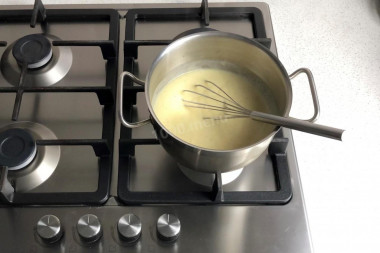
As soon as this happens, turn off the heating immediately. Leave the pan with the cream to cool. From time to time, approach and mix the cream with a whisk so that a film does not form on top.
Step 7:
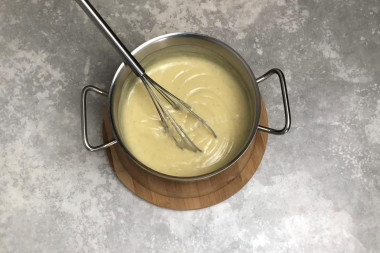
Cool the cream to a warm state. It should be of such a temperature that the finger lowered into it is pleasantly warm, but not hot. Put butter in the cream, in too hot it will melt, and in cold it will not melt at all. Our goal is to gently mix the oil into the cream until it completely dissolves.
Step 8:
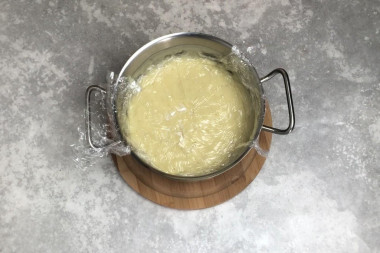
The finished cream will be absolutely homogeneous, smooth and shiny. It should be cooled well before use. To prevent a thick film from appearing on the cream, cover it with cling film so that it lies directly on its surface. Put the cream in the refrigerator for a couple of hours, and then use it as intended.
The custard prepared according to this recipe is very tender, moderately sweet, with a bright vanilla note. It is perfect for layering cakes, because it turns out to be quite liquid. If you want to use it as a filling for cakes, then add more butter.
Be sure to wash the eggs before use, as even the seemingly clean shell may contain harmful bacteria. It is best to use food detergents and a brush.
What is the difference between vanilla, vanillin, vanilla extract and vanilla sugar, how to use and replace them correctly, so as not to spoil the taste of the dish , read in this article .
Important!
To make sure the custard turned out, follow the simple rules:
- Let the base of the cream thicken when cooking (the flour should be brewed, but make sure that the future cream does not burn and there are no lumps).
- The brewed flour mixture must necessarily cool down, if you add oil to the uncooked mass, the oil will melt and the cream will not rise.
- The butter for the cream should be of high quality. Low-quality oil can have a bad effect on the consistency of the cream, make it liquid.
Caloric content of the products possible in the composition of the dish
- Whole cow's milk - 68 kcal/100g
- Milk 3.5% fat content - 64 kcal/100g
- Milk 3.2% fat content - 60 kcal/100g
- Milk 1.5% fat content - 47 kcal/100g
- Concentrated milk 7.5% fat content - 140 kcal/100g
- Milk 2.5% fat content - 54 kcal/100g
- Chicken egg - 157 kcal/100g
- Egg white - 45 kcal/100g
- Egg powder - 542 kcal/100g
- Egg yolk - 352 kcal/100g
- Ostrich egg - 118 kcal/100g
- Whole durum wheat flour fortified - 333 kcal/100g
- Whole durum wheat flour, universal - 364 kcal/100g
- Flour krupchatka - 348 kcal/100g
- Flour - 325 kcal/100g
- Granulated sugar - 398 kcal/100g
- Sugar - 398 kcal/100g
- Butter 82% - 734 kcal/100g
- Amateur unsalted butter - 709 kcal/100g
- Unsalted peasant butter - 661 kcal/100g
- Peasant salted butter - 652 kcal/100g
- Melted butter - 869 kcal/100g
- Vanilla sugar - 379 kcal/100g

